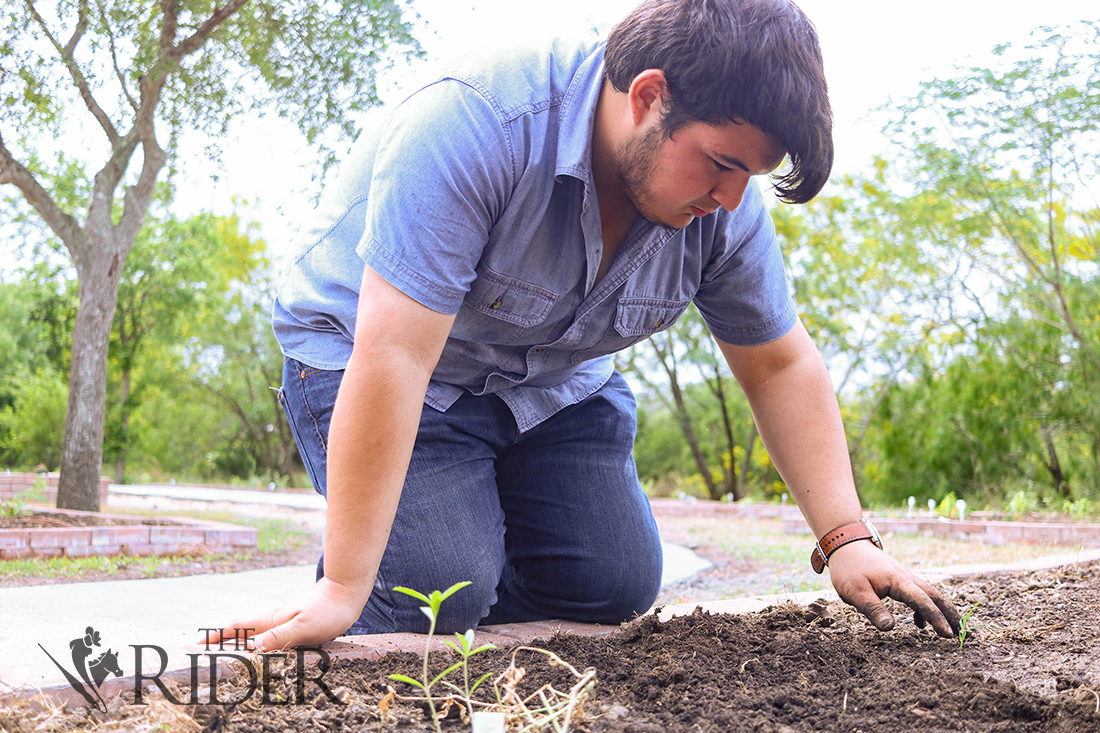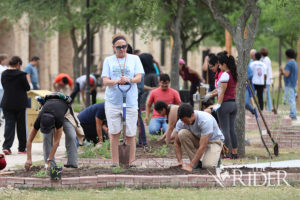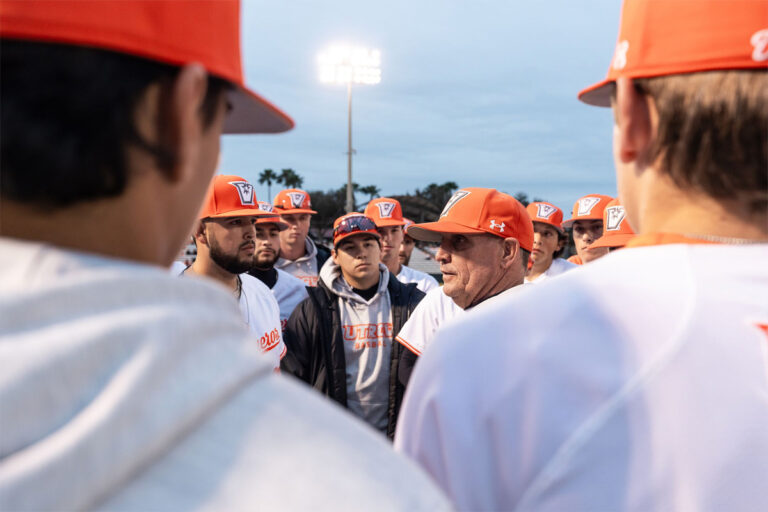
The UTRGV Biology Department and the School of Earth, Environmental and Marine Sciences have come together to add more flora on the Brownsville campus to provide a spot for monarch butterflies to breed.
“The main thing in conserving monarch butterflies is really to plant milkweeds and food sources for the [caterpillars],” biology Assistant Professor Julie Mustard said.
Monarch butterflies are planned to be placed on the U.S. Endangered Species List next summer and establishing a spot for them to breed could help prevent that, Mustard said.
Nineteen flower beds were built, housing native plant species.
Aside from milkweed, the garden includes blackfoot daisies, white mist and sweet gaura.
“They are all native species that are good for pollinators and butterflies,” Mustard said. “So, with butterflies, there [were] two considerations: one was nectar, [the adult’s] fuel, and the other is plants they use to [lay their eggs and] for the caterpillars to live on.”
Funding was provided by the Transforming our World Strategic Plan from the Office of the Provost.
Mustard, biology Lecturer Lucia Carreon-Martinez and Jessica Solis, a recent biology graduate, wrote a grant proposal for $12,060.
Solis assisted Carreon-Martinez in creating a video for the grant proposal in October 2017.
“Me and three other [students], we made a video talking about the importance of butterflies and their jobs as pollinators,” she said. “[Carreon-Martinez] sent that video out and she told me she [received] the [grant], but then I graduated in December.”
Carreon-Martinez pushed for the butterfly garden because, in addition to liking them, she noticed there are not as many of them anymore.
“We used to see lots of them, I don’t know, maybe eight years ago or something,” she said. “I grew up here at Matamoros and suddenly I was, like, ‘Huh, we don’t see that many.’ There’s a lot of efforts around the [Rio Grande] Valley for butterflies. So I was, like, ‘Why don’t we become part of that?’”

During the early stages of the project, Solis guided and enlisted volunteers whenever Carreon-Martinez was teaching.
“My job, mainly, was to supervise the students, her ecology students, and any other student who wanted to help, give them tasks and tell them what to do,” she said.
Biology Lecturer Sara Black agreed to help with the project because she likes to conduct classes outside and do something long term.
“I thought this was a great opportunity to have the [Biology] II students do a semesterlong project,” Black said.
The garden is located between the Life and Health Sciences Building and the resaca on the Brownsville campus.
A website is planned to provide more information about the life cycle of butterflies, the native plant species and how to help in their conservation.
Mustard thanks Abraham Hernandez, director of Campus Facilities Operations in Brownsville; Rueben Zuñiga, general maintenance leader; Cruz Salinas, agricultural specialist; Alejandro Fierro Cabo, an assistant professor of earth, environmental and marine sciences; Franklin Benton, a biology lecturer; Soraya Delgado, a part-time employee; Andrea Schwarzbach, an assistant professor for health and biomedical sciences; Silvia Barr, a native gardening coordinator for Quinta Mazatlan; Matt Kauffman, a park technician from Valley Nature Center; Heep’s LRGV Native Plant Nursery in Harlingen; Lowe’s; and all student volunteers.
For more information about volunteering for the garden, email Carreon-Martinez at lucia.carreonmartinez@utrgv.edu.





